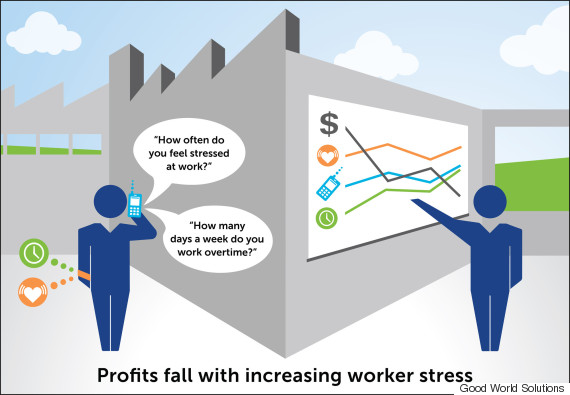
Everyone's talking about wearables in the workplace. Imagine your boss asking you to wear a Fitbit and compete in an office pool to track your physical activity and sleep. Companies like Google are pioneering this approach to so-called "people analytics," layering analytics on top of employee behavior. Grocer Tesco has been using wearables since 2004 to boost productivity in its distribution centers.
The cost of activity trackers has come down and functionality has gone up, both in sufficient measure to make it feasible to deploy them at mass scale.
What's the purpose of all this tracking? Some companies frame it as a perk to workers, through recognition or rewards for physical activity. Others use platforms like Calorie Cloud to turn employees' collective burn into donations for worthwhile causes. If running didn't make you feel good enough already, now you can save the world and get fit at the same time!
On the flip side, it can save companies real money by cutting massive health care costs and increasing productivity. Healthy, well-rested and unstressed workers are more productive, miss work less, and spend less on medical care. One recent evaluation goes so far as to say that sick leave and health-related costs fall, on average, 25 percent for companies with well-designed wellness programs.
What about in a manufacturing environment -- for the low-wage workers sewing our clothes and assembling our electronics (some of them producing the wearable devices themselves)? Most of the news has focused on office-worker applications, which is a natural starting point, but it may have far wider potential usage.
And if wearables can indeed be used to track factory workers, why would we do it? Just because a technology can be deployed doesn't mean it should be.
We see three reasons why passive data capture from factory workers makes sense:
1. Prevent urgent threats to worker safety -- Workers in Southeast Asia have died from excessive heat or exhaustion at work. We can ask workers 'Do you feel safe at work?' (And we do this today through anonymous mobile surveys.) But workers' opinions are not 100 percent reliable, especially on objective indicators that workers may not be in a position to accurately measure or observe. If we can track heart rate and temperature and alert decision-makers when these indicators are nearing critical levels, we can avoid the worst outcome for workers.
2. Reduce stress and boost job satisfaction-- Along the same lines, workers in China have been driven to suicide by the monotony and pressure of working like robots. They have aggressive production targets and often struggle to meet those targets. We can ask 'How often do you feel stressed at work?' and 'How many hours of overtime do you typically work each day?' But this self-reported information does not tell us the physical effects of stress that inevitably vary from person to person. Tracking respiration and heart rate would give us more reliable indicators of actual stress levels.
3. Increase productivity in a way that's sustainable -- There's plenty of evidence that happy workers are productive workers and that investing in worker well-being yields productivity improvements. So why don't factory managers already act on this data? One reason may be that the data is not visible in a way that informs decision-making. It's the same reason we as consumers don't use less water or energy, even though we know we should. (Or why Prius drivers are so maddeningly slow, their eyes glued to the energy efficiency indicator on the dashboard.) If managers had timely, relevant data from each production line, could they structure production in a way that's more efficient for people and production?
As with dating sites, there's a difference between what people say and what they do. You might set your search filters to tall, dark and handsome, but you actually send messages to quirky hipsters. Sites like OK Cupid analyze those differences and enhance their algorithm to match the actual behavior, rather than the stated preferences.
Similarly, we need to know more than what workers say they need. There's an opportunity to add depth to worker data by plugging them into the 'internet of everything' and finding out what is the physical behavior of a worker who self-reports as satisfied, compared with one who reports otherwise.
There are still more questions than answers. What will these trackers ultimately look like? They could be wrist or ankle bands, smartphone apps, jewelry or even smart clothing. And what about privacy? Will workers opt-in to these programs or will it be a mandatory condition of employment? Some of these answers we can only discover through experimentation in actual factories.
Good World Solutions is a partner of Cisco CSR. Cisco sponsors The Huffington Post's ImpactX section.